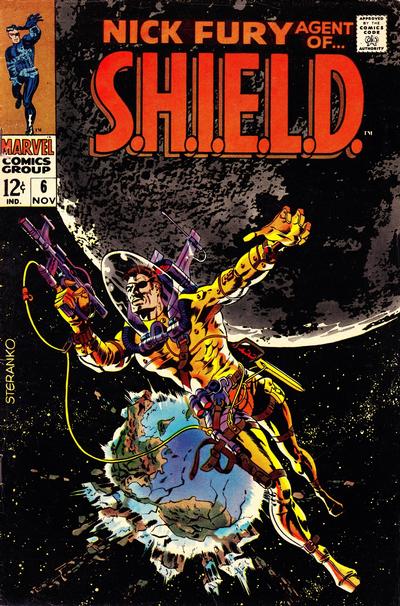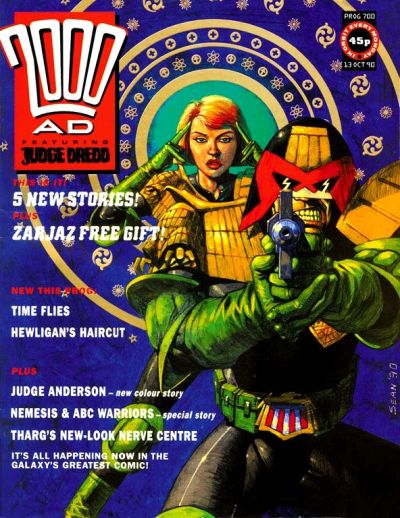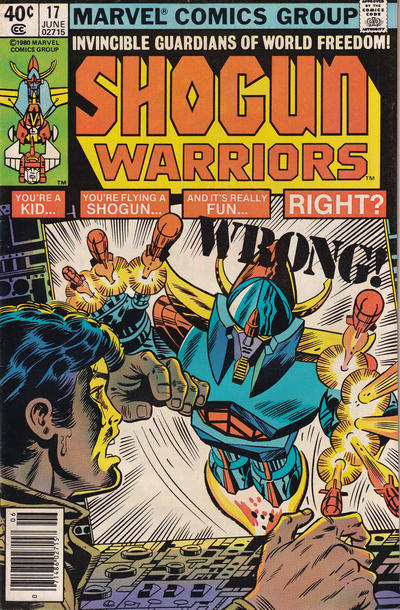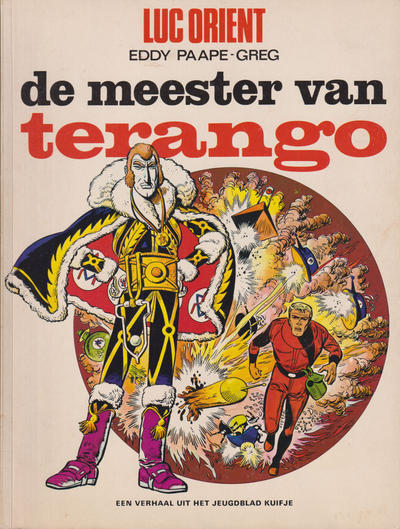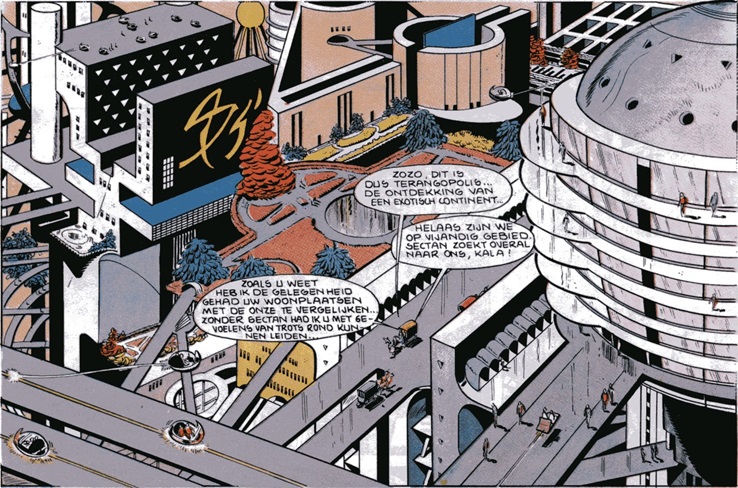The cover showing off Flare’s best assets promises exactly what you will get inside. If you liked Wonder Woman or Black Canary but hated how conservatively they dressed, Flare is the genetically engineered raised by Nazis in the Brazilian rainforest superheroine for you.
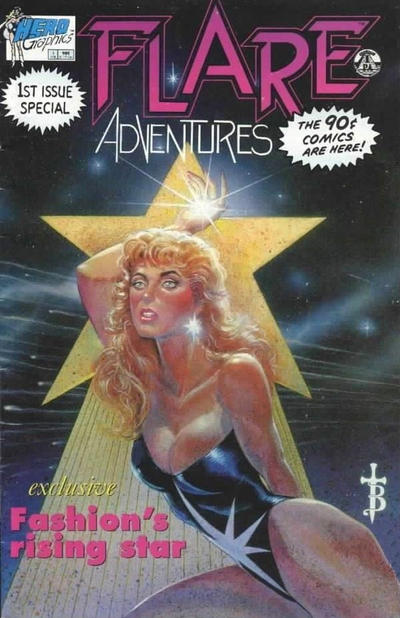
Flare Adventures was a low price reprint series of the first Flare series, the first issue reprinting the first story from the original. In it, Flare is woken up by a phone call from her friend who wants her to come down, quickly puts on a way too short dressing gown and promptly flashes the photographers her friend had assembled for the press conference Flare had totally forgotten about. After that, she does some work as a photo model, then has to fight a bank robbing villain called Darkon and is promptly beaten by his darkness powers. It’s a pretty good sampler for the rest of Flare’s adventures. If you read them for anything but the cheesecake, they’re mildly underwhelming.
But I didn’t know that when I bought this. It was 1992 and all I saw was another superhero when I bought this together with the similar Champions Classics, reprinting one of Heroic other old titles. They’d gotten George Pérez to do the cover for that one which lured me in, just as the Tim Burchard cover had done for Flare Adventures. Together they were my first introduction to the whole Heroic universe and honestly the covers were the best part of them. As I read more Flare stories when I came across them I realised that in general, the artwork was always a cut above the writing which never rose above ‘serviceable’.
To understand why that is you have to understand that Heroic Publishing and the Flare/Champions universe are largely the rpoduct of one man, Dennis Mallonee. He’s the writer for most of these comics as well as their publisher. Yet ironically, he didn’t create Flare or the Champions: those came from a role playing game also called Champions. That had been first released in 1981 as one of the first superhero RPGs and also one of the first not to use dice rolls but a point distribution system: you could decide for yourself what your character’s strengths and weaknesses were. As people started playing that, they of course created their own heroes and some of these, via ‘official’ RPG sessions were included as examples in new editions of Champions. Then, when during the ’85 Comic Con fans of the game asked if there would ever be a comic version, Mallonee decided he would do it. That led to the first Champions miniseries, published by Eclipse in 1986, which wasn’t quite what he wanted.
Mallonee was already a publisher, having published the Fantasy Book prose magazine and he decided he would go into comics to publish his stories the way he intended. Heroic Publishing started off in 1987 with three series: champions, another Mallonee series called Eternity Smith that had started at Renegade Press and the Roy & Dann Thomas written Captain Thumder & Blue Bolt. Flare would arrive the year after, having been voted the most popular member of the Champions by the readers of that first Eclipse series. She quickly became the poster girl for Heroic as a whole, starring in various titles, always written by Mallonee and drawn by various artists you may have heard of: Mark Beachum, Chriss Marrinan, e. R. Cruz, Howard Simpson.
Originally created by Stacy Thain for that original Champions RPG, Mallonee fleshed out her background, making her the product of Nazi super science as well as offspring of the Olympian gods. She got a younger sister with similar powers who unlike her completely bought into Nazi ideology, who would later also join the Champions team. Because I could find none of these titles with any regularity in the comic shop and also because Heroic had a habit of stop starting series and introducing new ones that mixed reprints of older material with newer stories, getting a handle on who Flare actually was was always difficult to me. Rereading some of this now it’s clear though that there just isn’t that much going on with her. At best these stories are store brand superhero stories, the characters no more compelling than somebody else’s RPG character always is, at worst they’re just excuse for Flare or another heroine to fall out of her top. Because it’s always Mallonee writing them, these stories and characters all blend together; Flare doesn’t feel that different from her sister or from another heroine like Arcane.
Nevertheless, Flare and Heroic Publishing are still around, now doing print on demand and Kickstarter campaigns. Somebody still likes Heroic’s blend of cheesecake and superhero stories….
